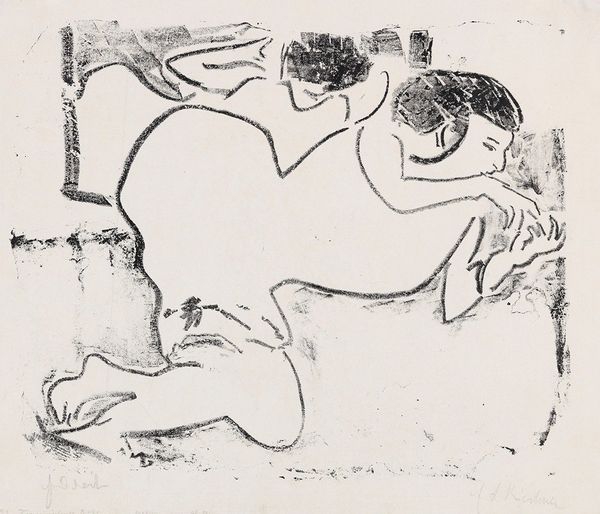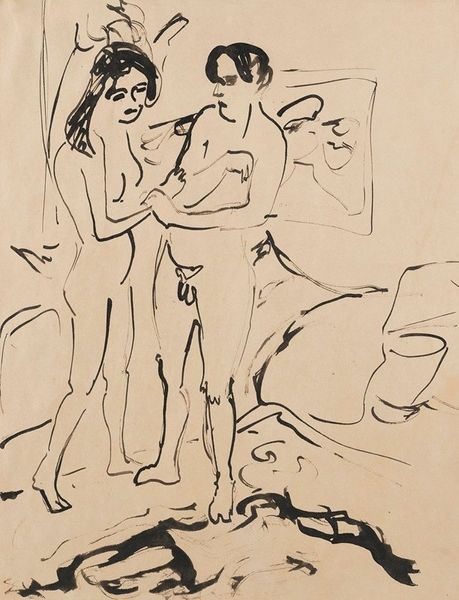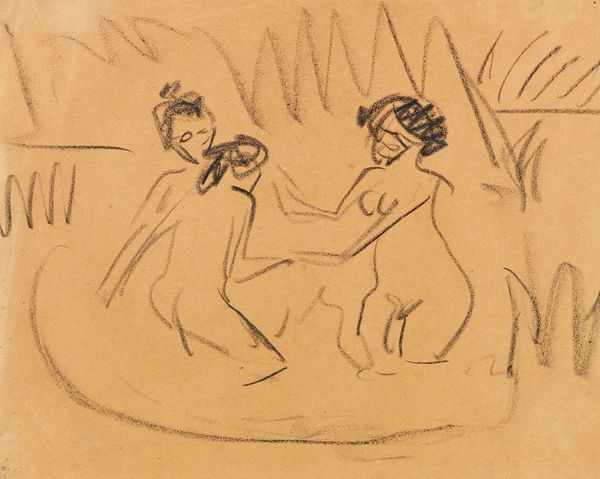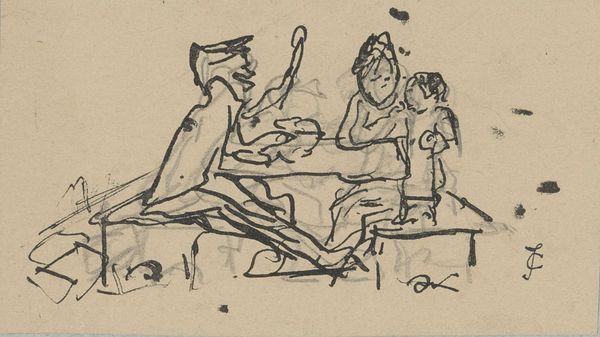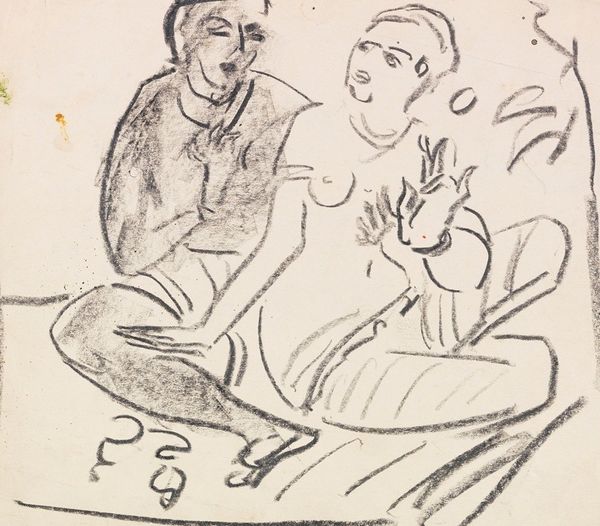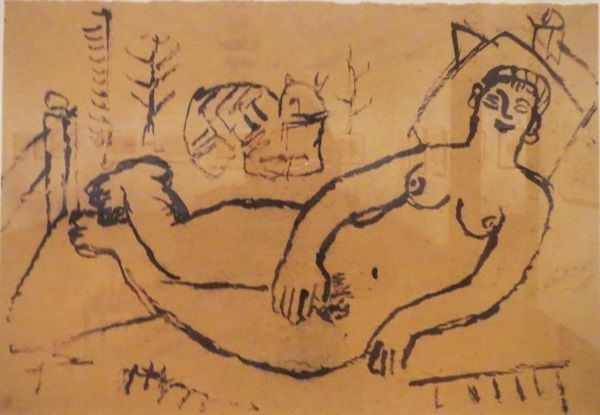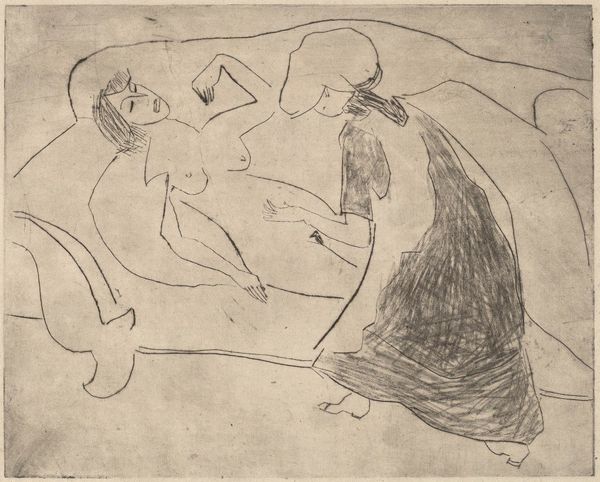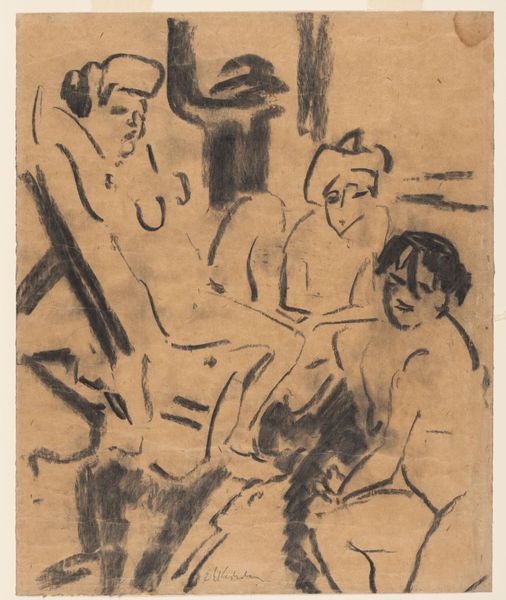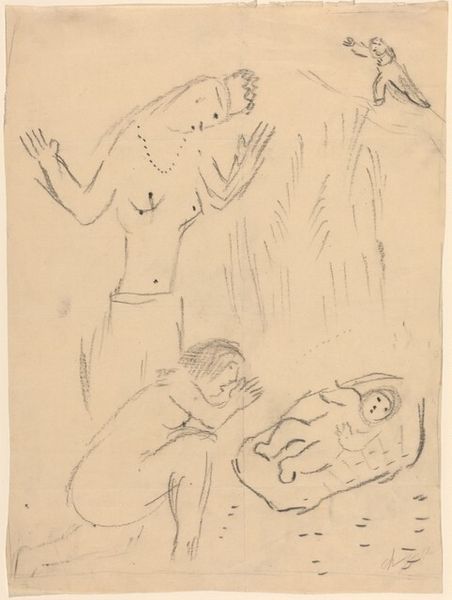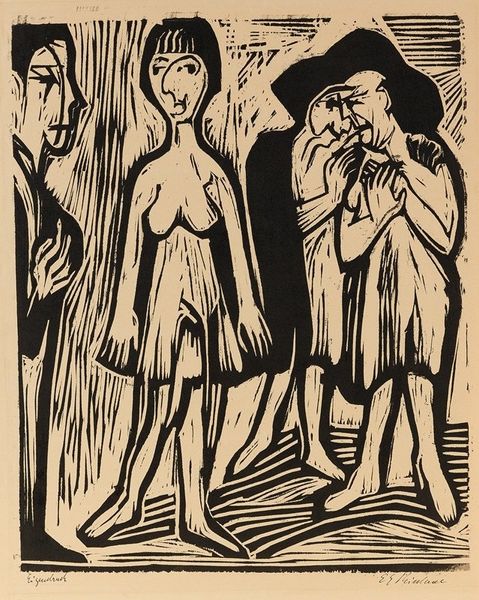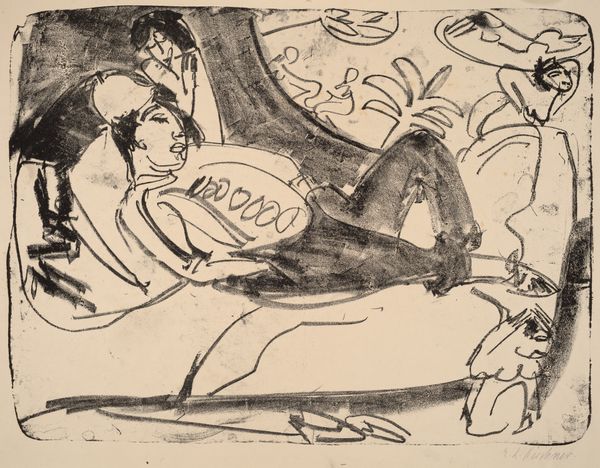
drawing, ink
#
drawing
#
figuration
#
ink
#
expressionism
#
nude
Copyright: Public Domain: Artvee
Editor: Here we have Ernst Ludwig Kirchner's "Bathing Couple in the Studio," made in 1908 with ink on paper. It feels quite raw, almost unfinished. The figures are angular and there's a sense of unease, even in this intimate setting. What strikes you most about this piece? Curator: For me, it's about the context of production. Kirchner, as a founding member of Die Brücke, was intentionally rejecting academic artistic norms. Look at the choice of materials – the humble ink on paper, the sketch-like quality. It challenges the traditional hierarchies that privileged oil painting and idealized forms. Editor: So, it's about more than just the subject matter? Curator: Absolutely! It's a deliberate move to democratize art, bringing it closer to everyday life and experience. He is interested in modern life but uses inexpensive material. The apparent roughness of the linework, is that about de-skilling, perhaps? Editor: De-skilling? I'm not sure I follow. Curator: Well, Expressionism, as a movement, has deep ties to anti-establishment feelings. So could Kirchner's almost savage treatment of the ink line point to rejecting fine art tradition, perhaps engaging in forms of craft more connected to "the people"? What do you think? Editor: Interesting point! So the choice of materials and the artistic process itself become a political statement, in a way. That definitely adds another layer to my understanding of the work. I never really thought about art materials as anything beyond, well, the stuff you make art *with*. Curator: Exactly. And by considering the social and economic context, we can unpack how artistic choices reflect larger cultural forces. Editor: I see it now. I never realized how materials could play such a crucial role in conveying meaning.
Comments
No comments
Be the first to comment and join the conversation on the ultimate creative platform.
